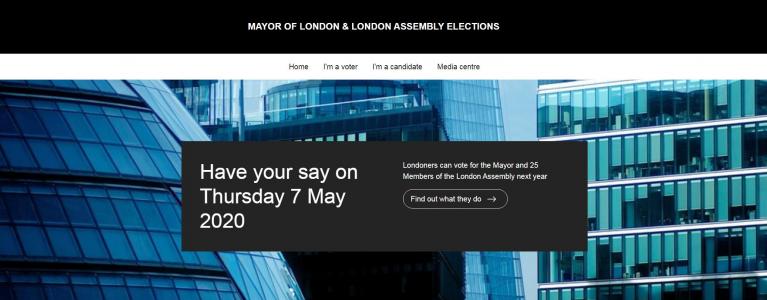
Lindsay Mitchell, Associate Product Manager in the Digital Team tells us how they went about building a new elections website…
The Mayor of London and London Assembly elections are happening next May. The London Elects website is a key source for Londoners to learn about when, how and who they can vote for in these elections.
It’s been a while since we first developed the site, and there were some changes we wanted to make to ensure the site was as useful, clear and accessible as it could be. After thorough analysis, weighing up the options, it was decided that we would build a new website from scratch using Drupal 8 (a website content management system).
First thing first, we needed some developers to build the site for us. After a competitive procurement process, we decided on Numiko. They really impressed us and had great experience with clients like the Electoral Commission. We then gathered the other key players for our team: Delivery Manager, Tester, Content Designer and of course some users.
We thought about our key users, not only voters, but candidates, journalists, boroughs and GLA stakeholders. We reached out to Londoners (via Talk London) so we could invite them to come to City Hall for a discovery session. We asked them what they thought of the existing website and what they’d like to see on the new one. We then repeated this for all our other user groups.
After these sessions we had a list of things to action:
- an improved polling station finder
- removing the left-hand side navigation
- adding breadcrumbs
- adding a search functionality
- adding a site search
- removing the section for Electoral Administrators as the boroughs said they didn’t use it
- ensuring there are clear calls to action
- ensuring there is clear signposting to other sources
Once we all knew what we were aiming for, Numiko drew up some wireframes and designs for us to test. After a few tweaks, they started to build. We had four, two-week development sprints, continually testing the site’s functionally and accessibility along the way.
When we had the bones of the site, we were able to start adding content from the old site to the new one, with some updates and changes along the way.
We held three show and tells during the build of the website to keep GLA stakeholders up to date with what we were doing. These were live streamed so people that couldn’t be there physically could watch online or later. The purpose of these was to show our progress and answer any questions.
We also asked the same users that attended our discovery sessions back to test the site and feedback. We gave them a series of tasks to carry out on the site to ensue we’d covered all areas. They gave us some really positive feedback and we were really pleased to see the site was intuitive and easy to use.
After some bugs fixes and final content tweaks, we launched the new site on the 23 October 2019. And I’m pleased to say in December we passed our GDS service standard assessment where we had to prove we had met the 14 points.
We’ve added a feedback mechanism to the website so we can continuously improve the site. Let us know what you think!